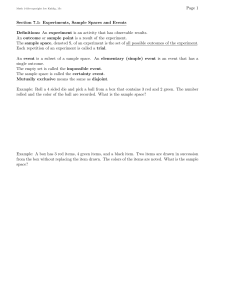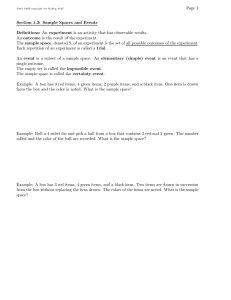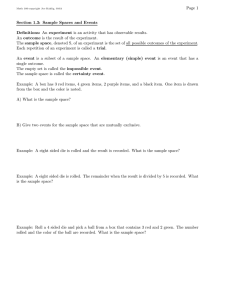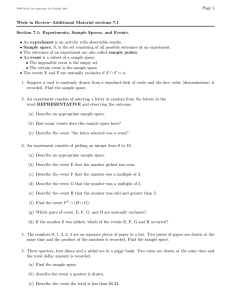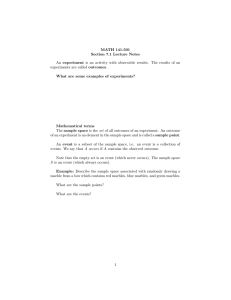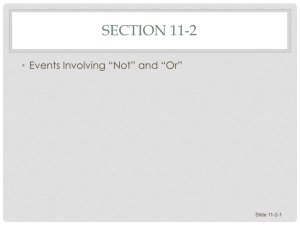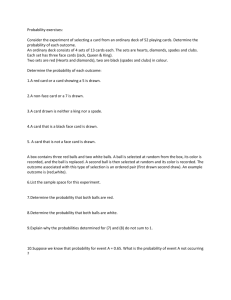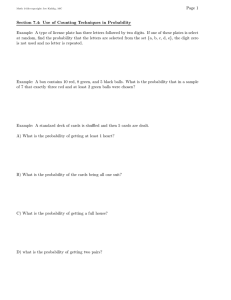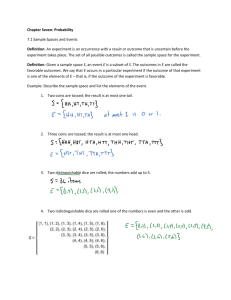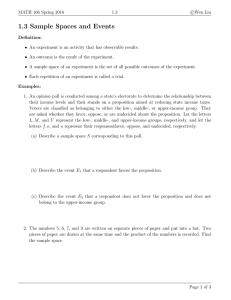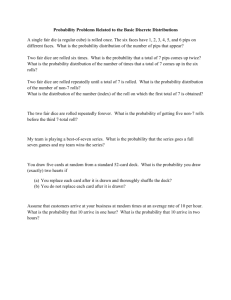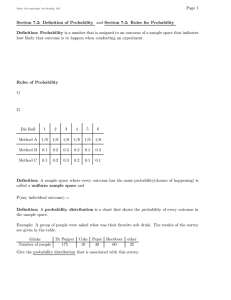Page 1 Section 7.1: Experiments, Sample Spaces and Events
advertisement
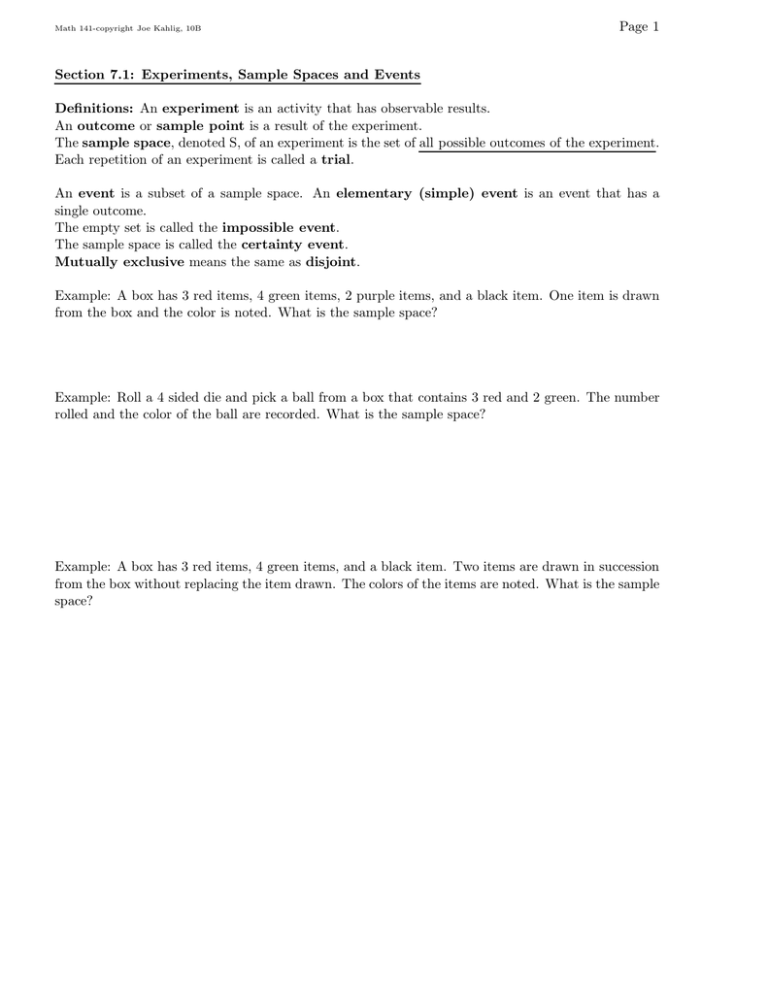
Math 141-copyright Joe Kahlig, 10B Page 1 Section 7.1: Experiments, Sample Spaces and Events Definitions: An experiment is an activity that has observable results. An outcome or sample point is a result of the experiment. The sample space, denoted S, of an experiment is the set of all possible outcomes of the experiment. Each repetition of an experiment is called a trial. An event is a subset of a sample space. An elementary (simple) event is an event that has a single outcome. The empty set is called the impossible event. The sample space is called the certainty event. Mutually exclusive means the same as disjoint. Example: A box has 3 red items, 4 green items, 2 purple items, and a black item. One item is drawn from the box and the color is noted. What is the sample space? Example: Roll a 4 sided die and pick a ball from a box that contains 3 red and 2 green. The number rolled and the color of the ball are recorded. What is the sample space? Example: A box has 3 red items, 4 green items, and a black item. Two items are drawn in succession from the box without replacing the item drawn. The colors of the items are noted. What is the sample space? Math 141-copyright Joe Kahlig, 10B Page 2 Example: A four sided die is rolled. If a four or a one is rolled the die is rolled a second time. The total sum of the numbers rolled is recorded. A) What is the sample space. B) Give the event, E, that a odd sum was recorded. C) Give the event, F, that a sum greater than 5 was recorded. D) Determine if E and F are mutually exclusive. Example: Two coins are drawn, without replacement, from a bag that contain 3 quarters, 4 dimes and 1 fifty-cent piece. The dollar amount is recorded. What is the sample space?
